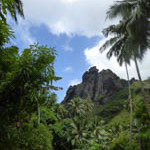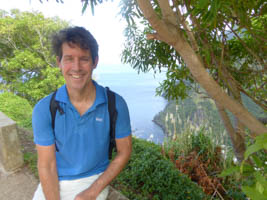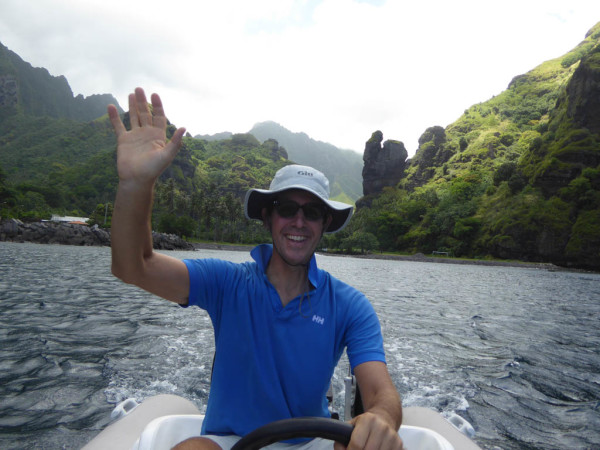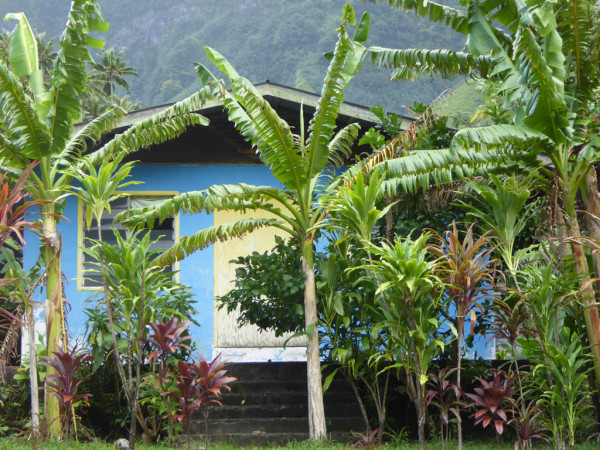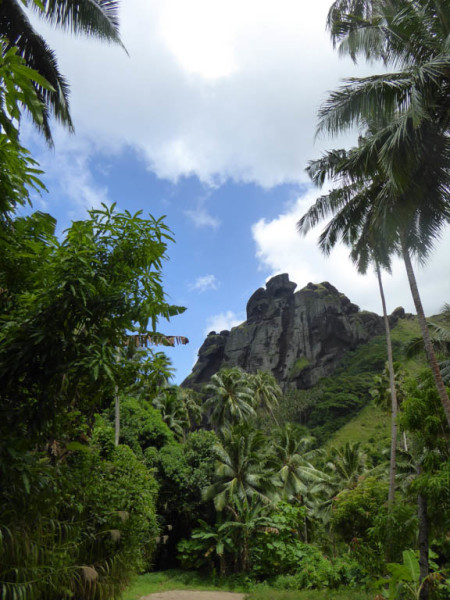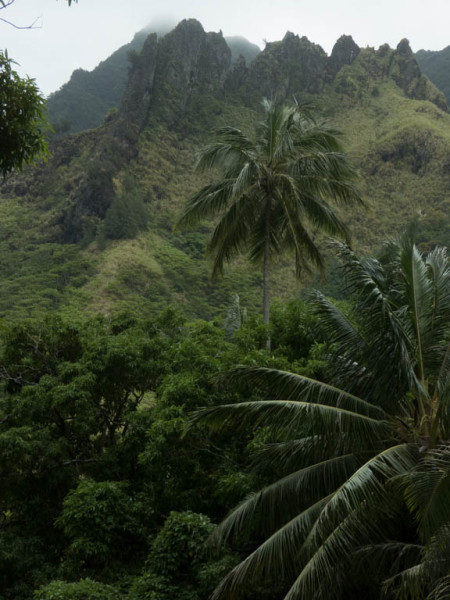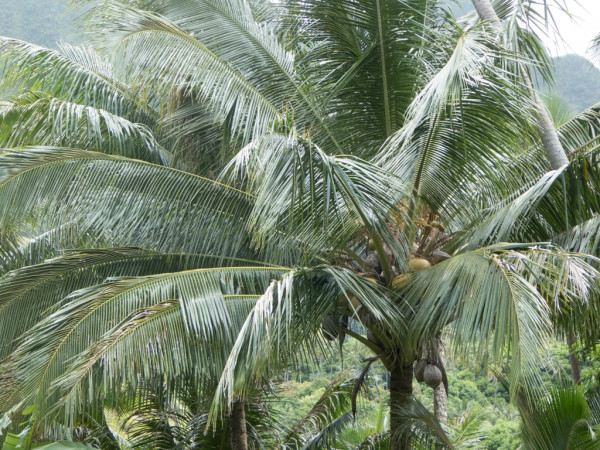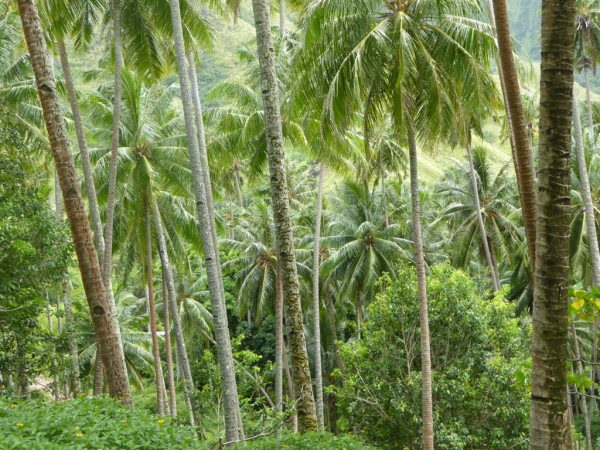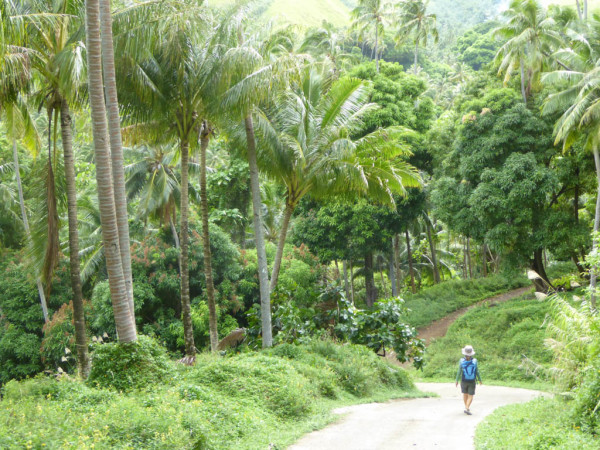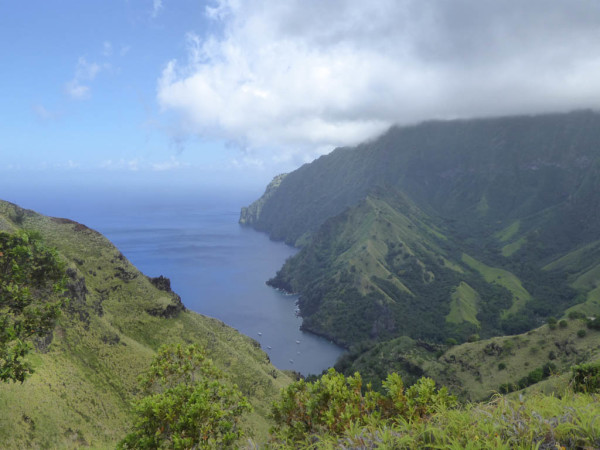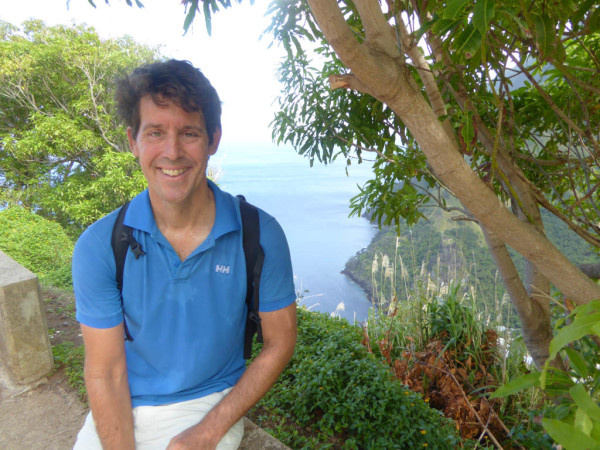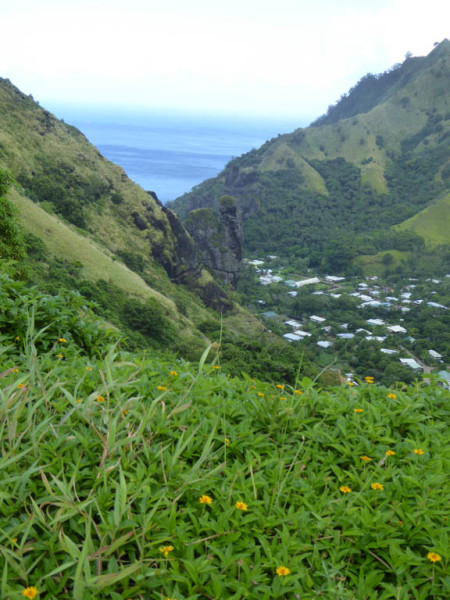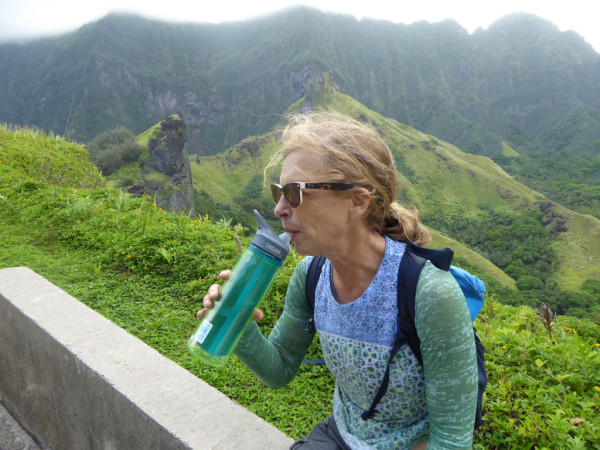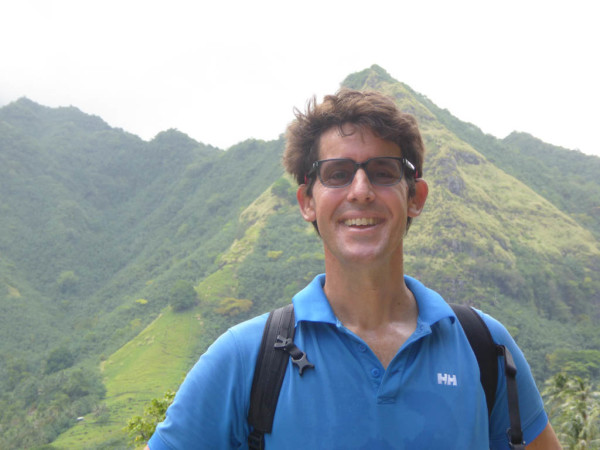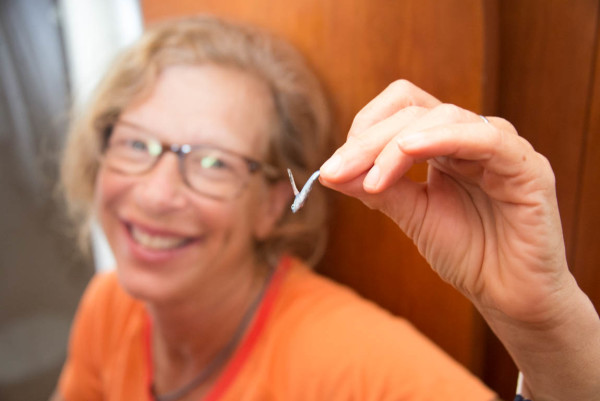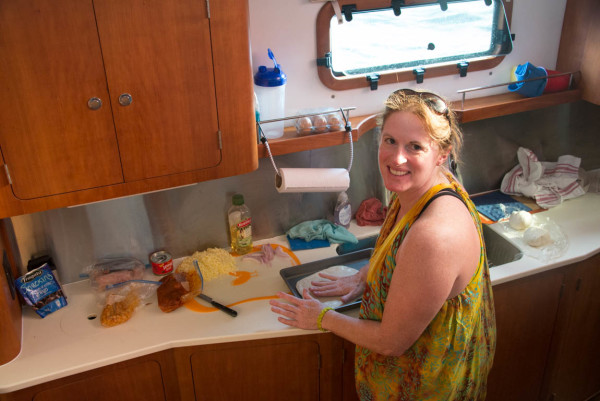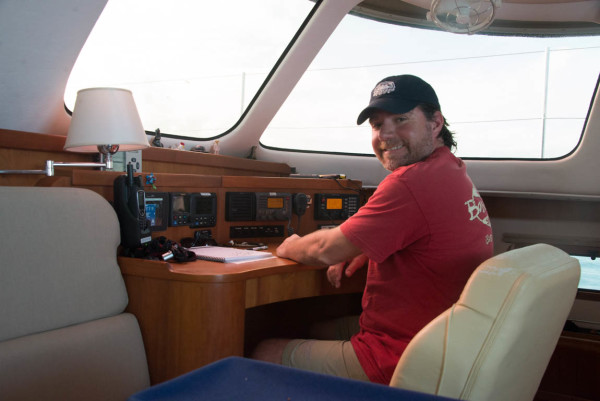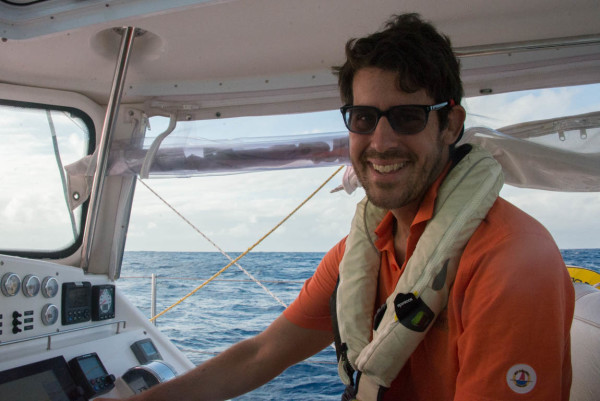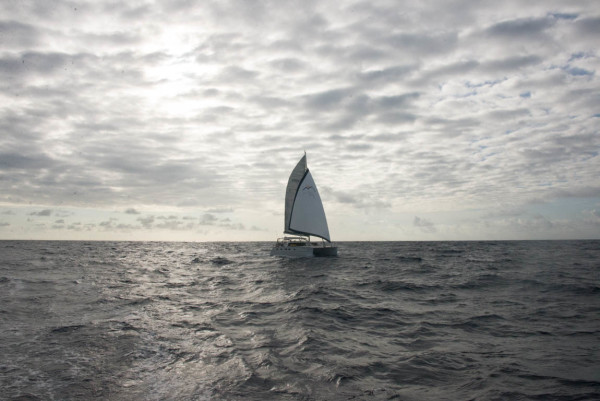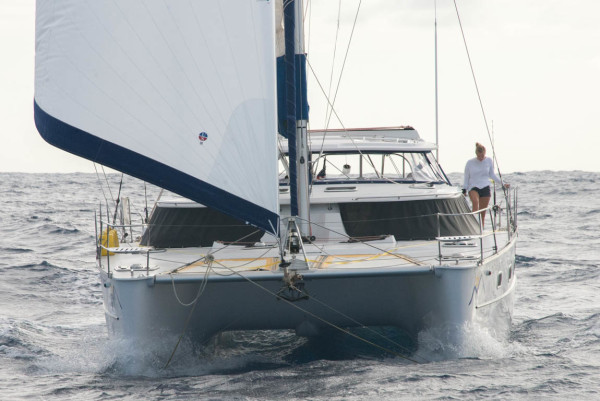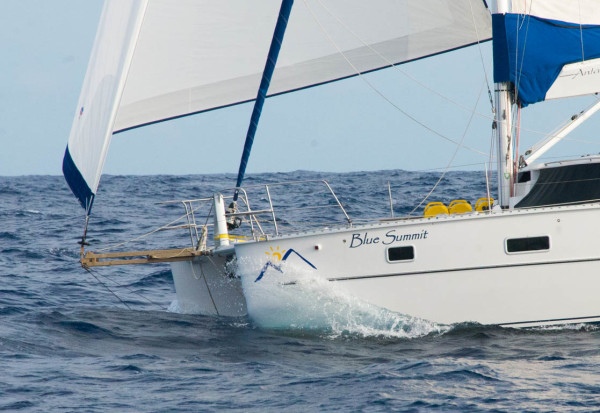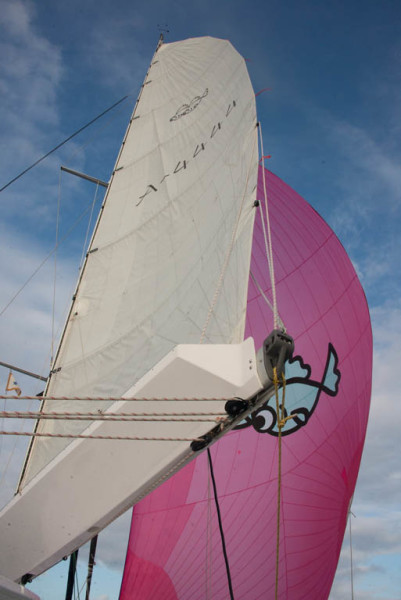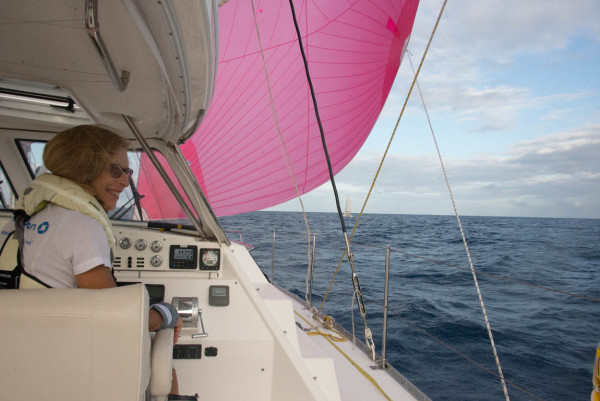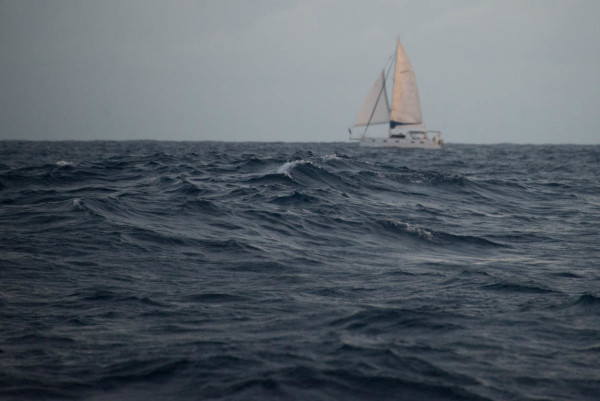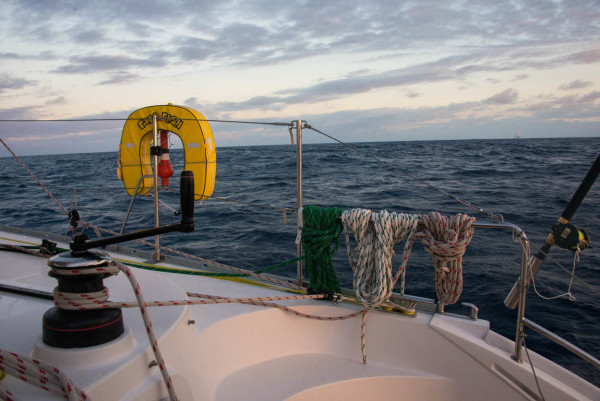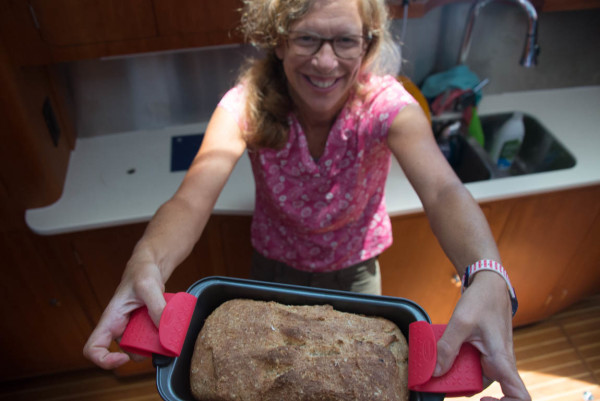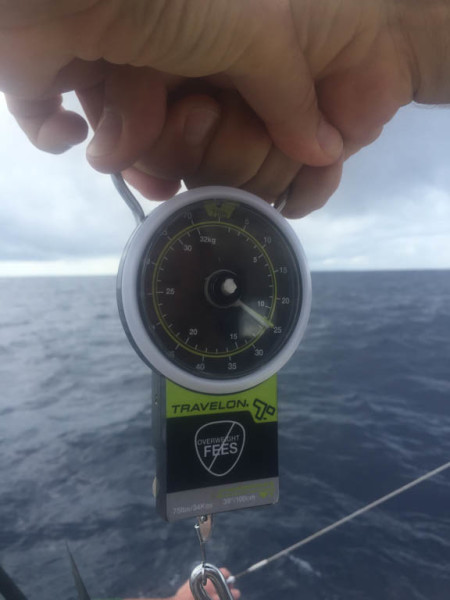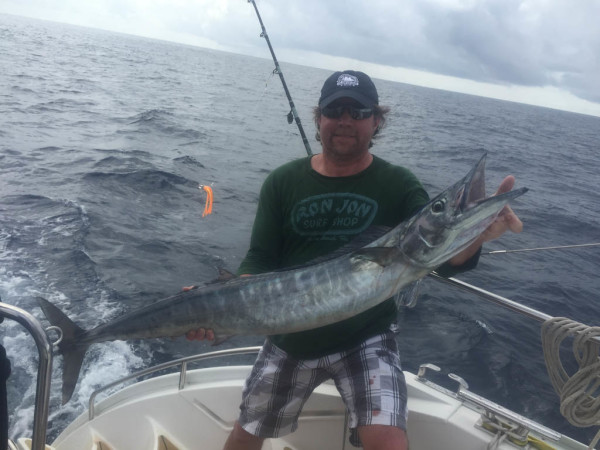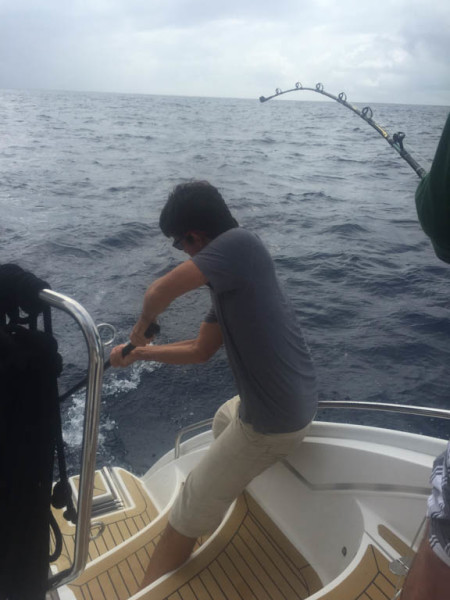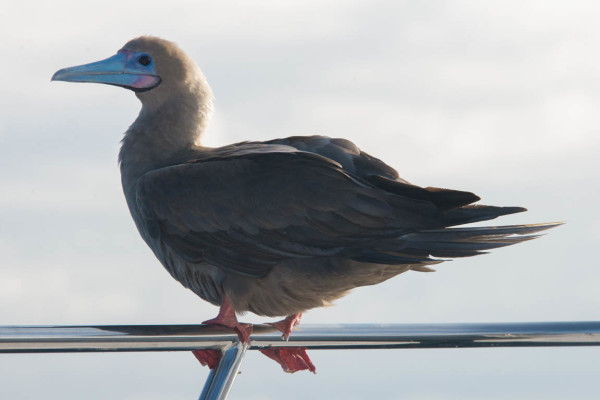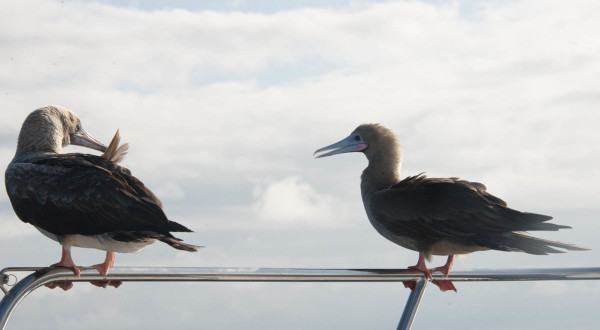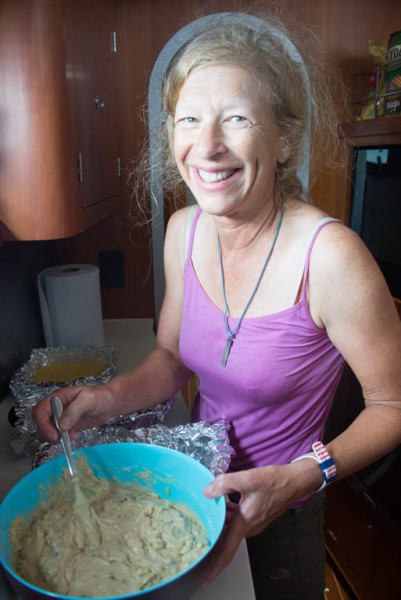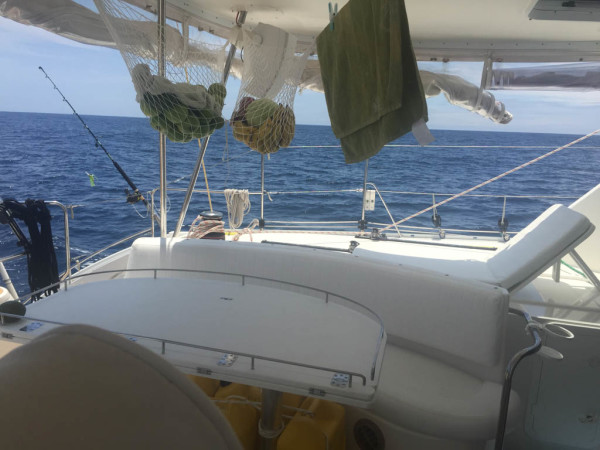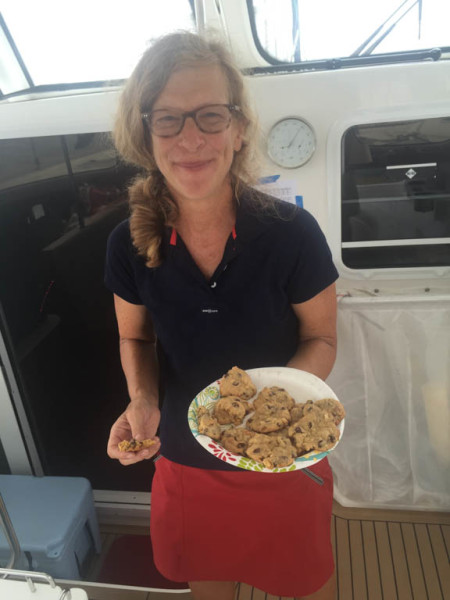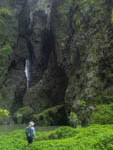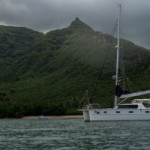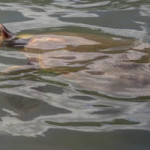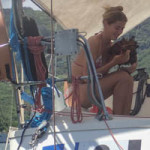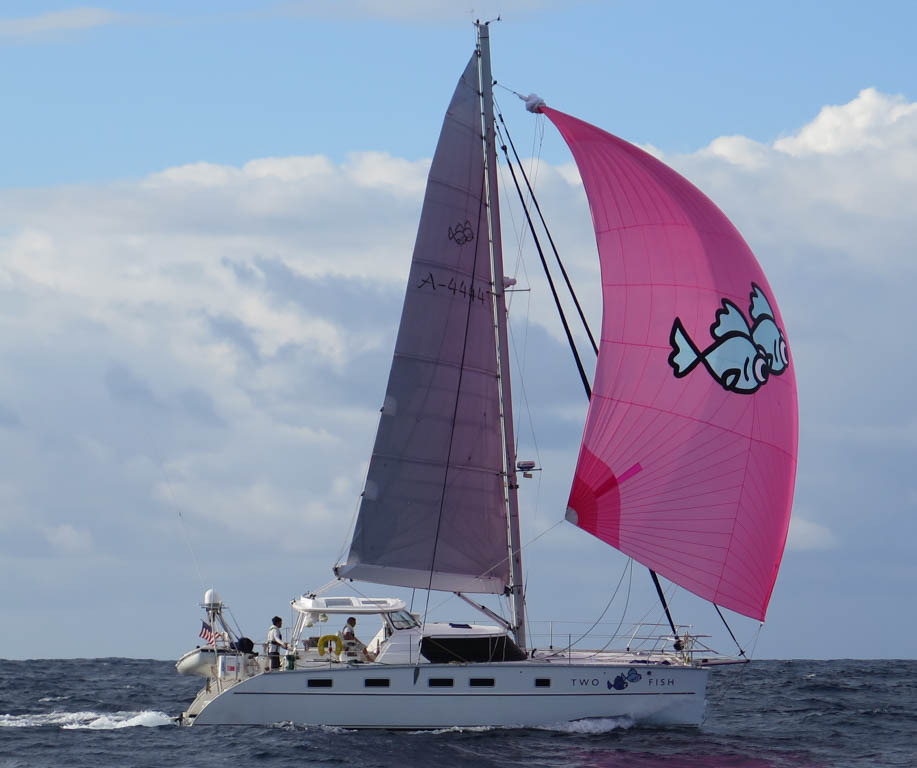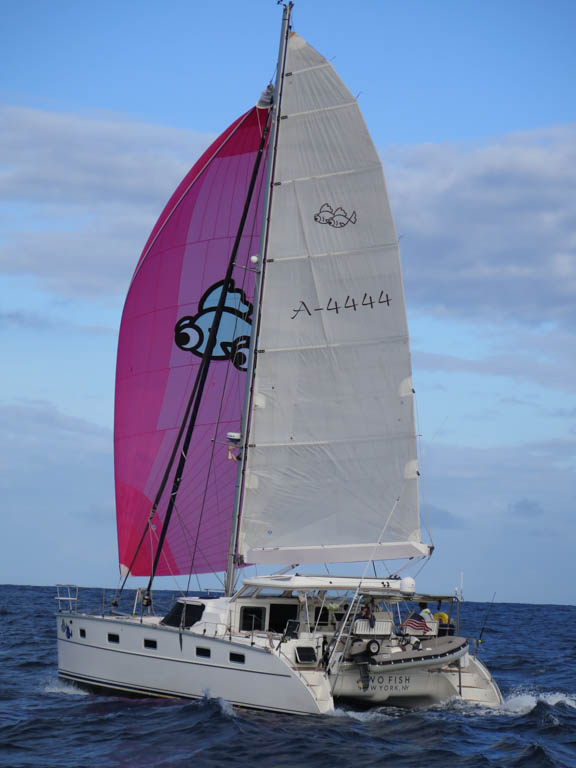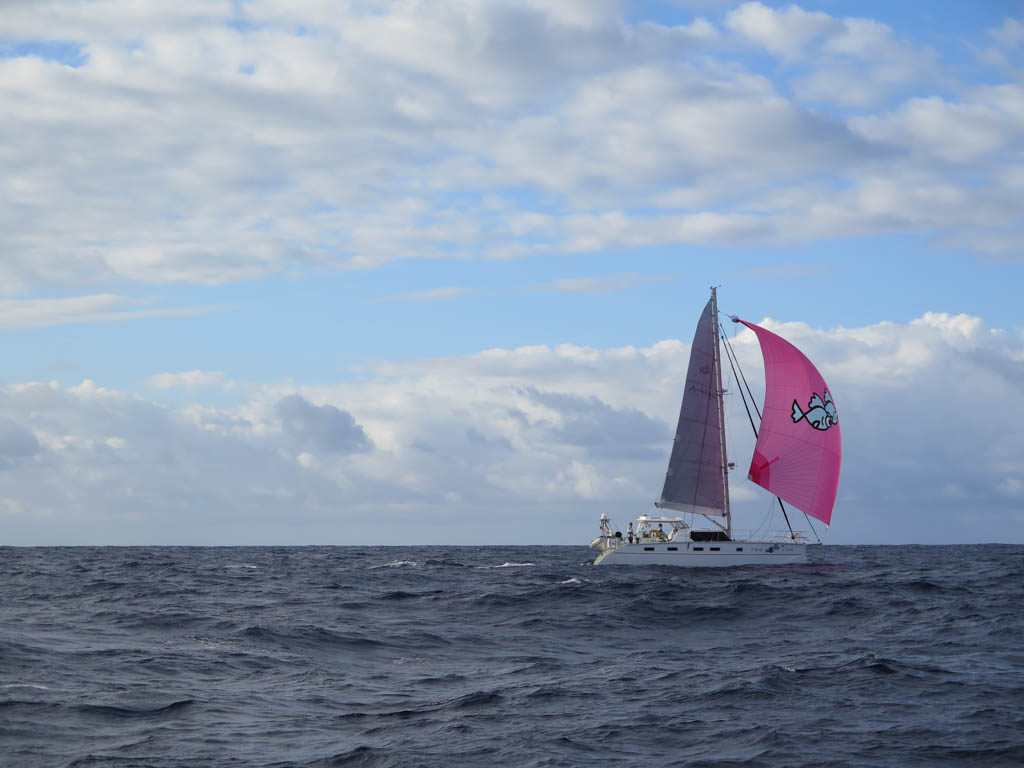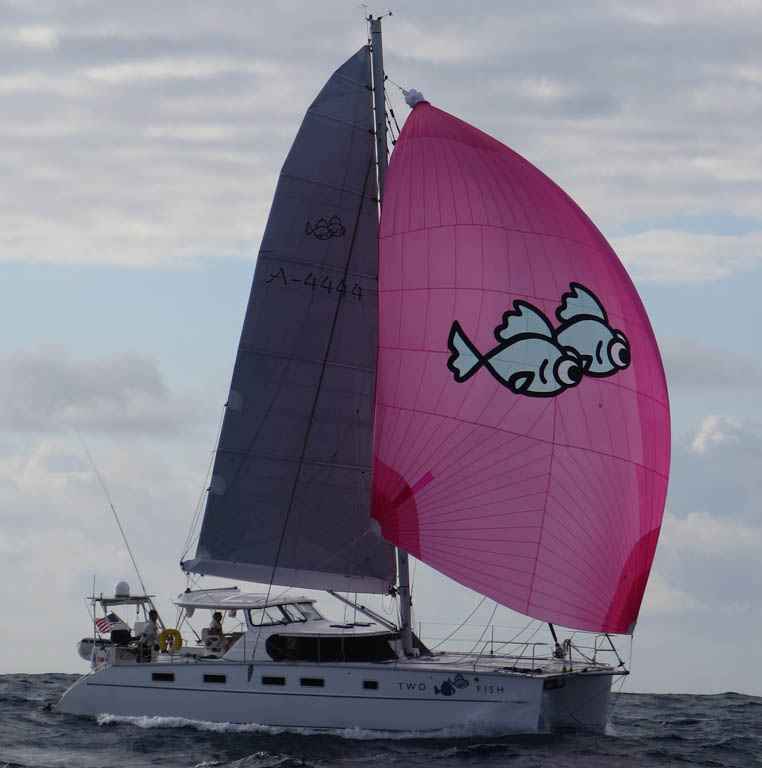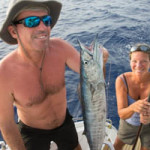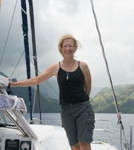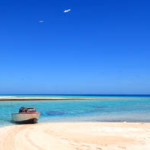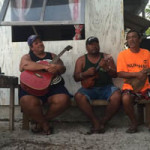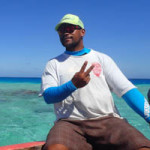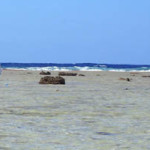We awoke to Two Fish tugging strongly on her anchor chain in a 20 knot breeze, but fears of the Raroia anchorage being uncomfortable were put aside by a weather forecast predicting a lightening breeze throughout the day. We scrambled around the boat packing masks, fins, cameras, hats and sun cream. Our ride for the day was a local who was doing the island’s first foray into the tourist trade. He currently works in the copra business and pearl farming but was convinced to try this new venture. We had paid in advance so that he could buy gas for his 19 foot wooden motor boat. The boat is spartan and lacks seats but our guide offered a rope for additional safety. All doubts of the need to hold on were shaken out of my body when we bashed into our first set of bone jarring waves. Gail was wincing as she was convinced her spine was being compressed and that she might depart the boat standing less than 5 feet tall. Mercifully, the ride ended and armed with the knowledge that the return trip would be down wave we all bounced back very quickly.
After a short stumble into the woods we found a monument erected to commemorate Kon Tiki’s crash site. It had been paid for by a similar mission a decade ago with addition funding from the Norwegian government. I doubt the average Raroian could care less about the monument. How about a monument for the 100,000 Polynesians that did the trip upwind before modern maps! Thor sailed the easy way, which is also the route we are following.
We then walked the fringing reef which is 350 meters wide (distance from the barrier island to the open ocean). The fringing reef covers the entire windward side of the island and is 20 nautical miles long. The fringing reef is between 10 to 40 centimeters under the water yet is full of marine life. Many baby sharks pass their childhood in these shallow waters. The sharks are easy to spot by their black tipped fin which is constantly out of the water. The sharks coast inches above the sharp coral, sea cucumbers and sand dollars (I renamed them “sand 20 dollars” because of their huge size). But the aspect of the fringing reef that captivated me was the line between reef and ocean. As we neared the end of the reef I could feel the powerful Pacific rollers that have traveled unimpeded for thousands of miles before being arrested by the reef. The dark blue ocean water called to me like the sirens in Odysseus, but I knew if I jumped in it would be sudden death. I would be pounded into shark food by the surf.
During the walk back from the reef’s edge I coined a new term for the clear water. Gin clear water is overused and I associate it with cloudier Bahamian water. In the Tuamotus the water is so clear you don’t need to put on a snorkel mask, just cast your eyes down and you will see plenty of fish and bright corals. So my new term is “can read a copy of the New York Times placed on the bottom clear water”. I am not sure it will catch on.
Pass dives are one of the reasons cruisers come to the Tuamotus. The basic idea is to jump in at the beginning of the pass at slack water before the flood tide. Then descend to the bottom and get swept back into the protection of the atoll. Simple plan but this was my first pass dive so I was excited when a cruiser, Chris, decided to join (baby sit) the two rookies. This was the greatest dive ever! We dove quickly into an area with many large grouper and reef sharks. We stayed for a short while by holding onto rocks at the bottom, but soon the current started to flood harder and we let go and rode the marine roller coaster ride. For the next 15 minutes we traversed the pass; it felt like another planet. I kept thinking about how different this crossing of the pass was from 24 hours earlier on Two Fish. Both kept me plenty busy. The bottom is covered in corals of many types for as far as the eye can see. The complete coral coverage of the entire bottom is vastly different from my Caribbean dives. The bottom of the pass has a winding canyon which the current pushed us through. Some of the turns were a bit sharp so a few well timed fin kicks were required to navigate the turn before plowing into a wall of coral. A glance above to the water’s surface showed long white lines, evidence of the standing waves that boats would encounter on a passage. I quickly returned my focus to the immediate surroundings. The tapestry of marine life is vast but I was going too fast to appreciate any meaningful percentage of it. Chris was in front and had slowed down but I was struggling to stay behind. I experimented with different body positions to decelerate. Eventually, I realized that 2 feet deeper the current is much slower. I wasted a bunch of air kicking hard with my fins so I checked my air gauge frequently to make sure I would have enough air to complete the final portion of the dive. Grouper and Sharks still featured prominently and a host of other wonderful creatures swam by but it was the endless coral that captivated my attention. We surfaced and thankfully the greatest day was not yet over.
“C’est tres blanche” (it is very bleached) is what our guide said on the return ride home. He was referring to the coral bleaching caused by the high sea temperatures of El Nino. When coral becomes stressed it releases acids that kill the algae that create coral’s protective cover and coloration. The coral then turns white without this protection and soon dies. The grouper population then drops and the only fish that remain are not safe to eat. This is a crisis for the island since they fish to eat. New food sources not quite to our taste come onto the menu.
Chris told me an amazing story. Chilean fisherman create simple rafts with the purpose of setting them out to sea. Over the course of many months, the raft grows plants, then attracts small fish, then medium fish and finally bigger fish join the ecosystem. The raft has a cheap plastic ball with rechargeable batteries, a solar panel and a satellite text messaging unit. The Chilean fisherman can track hundreds of these mini ecosystems and at the right time they follow the GPS track and pick up the raft and catch the fish. Throughout the year, many of these rafts are lost and Chris has a hobby of converting the parts into new things. A rechargeable flash light is popular with the locals.
A few months ago, the village was in a frenzy about the great news that the island was chosen to be a one-time stop for a cruise ship. A committee was established to set about the process of preparation. The islanders decided that to look their best a fitness regime was required and a basic weight-lifting station was created near the quay. As the day approached, brooms were pressed into service and all the island’s flowers were picked to adorn the locals and give to the guests. But the weather gods were not kind and the ship anchored outside the pass. The pass was rough and only 6 people of the hundreds on board came to shore. The village was crestfallen but the good news is that the fitness regime has continued.
Back on shore, we strolled to Reggie’s which is Reggie’s home, far short of a bar. Reggie spins a good yarn not letting details like the truth hold back the drama. We were told about his ex-wife and his life on a western island in the Tuamotus, his creation and eventual loss of two pearl farms, and his attempt to populate the island with goats, chickens and pigs. The pig experiment was curtailed when the local dogs had a hankering for bacon. The chickens seem to lower property values as no one is harvesting the eggs, but sleep is cut short by the roosters. The magical moment of the evening was the music. I just relaxed without a concern in my mind enjoying the gentle voices of the singers, the cooling breeze and the sand under my feet.
How could a day be any better? I climb in the bilge to fix stuff for days like this. Thank you Raroia.
Photos: Our guide at the helm of his boat. Jason in the you can read the New York Times clear water. The fringing reef meets the open ocean.
